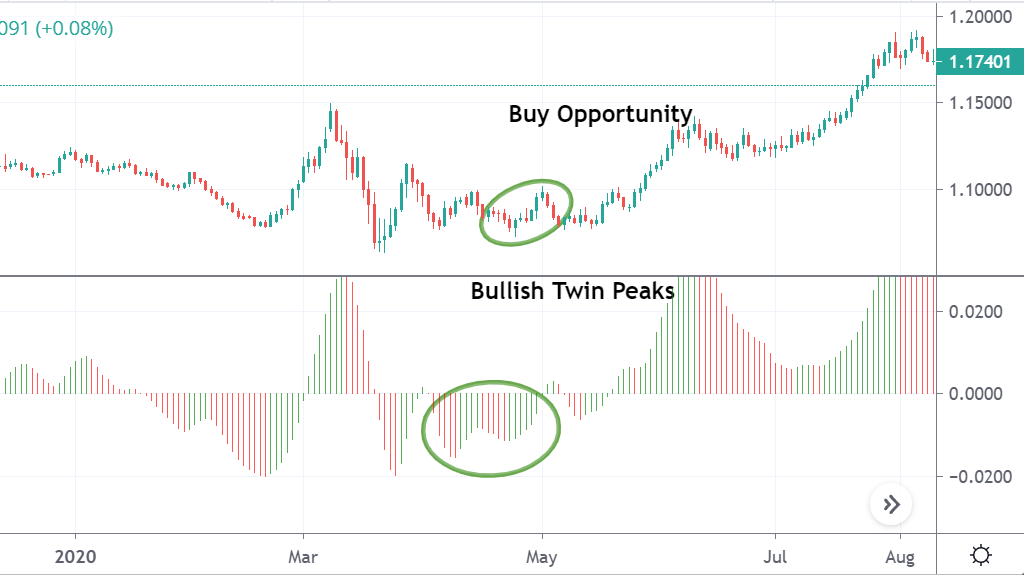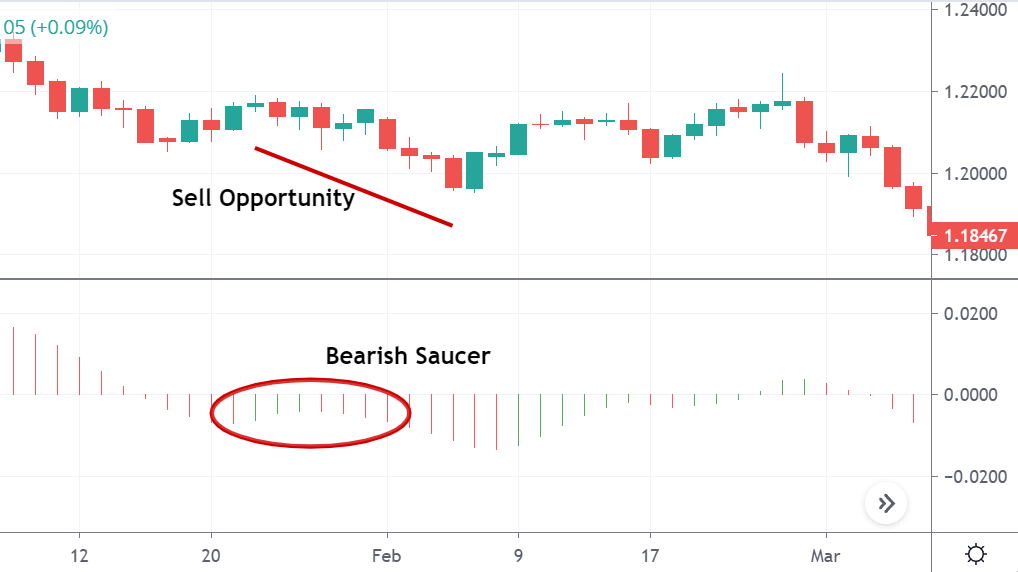
What is the Awesome Oscillator
The Awesome Oscillator (AO) is a popular indicator of market momentum developed by the American financial analyst Bill Williams. It is a boundless indicator anchored around a zero line and displayed as a histogram of the average of two simple moving averages (SMAs), one covering recent momentum and the other a longer period in the market.
Traders often use the AO with other indicators to confirm bullish and bearish trends and predict possible reversals. Keep reading to learn more about how the AO indicator works and how best to employ it in your own trading strategies.
How does the Awesome Oscillator work
Williams developed the AO as a simple way to measure market momentum and identify potential reversals by comparing a 34-period simple moving average from a five-period simple moving average.
NOTE: The simple moving average is determined by adding together the median price of each day in the period and dividing it by the total number of days in that period.
Price movements are then plotted on the histogram in accordance to the two SMAs according to the comparison of two simple moving averages.
When the five-day SMA is greater than the 34-period SMA, the value generated in the histogram is above the zero line and a bullish market is indicated.
When the converse situation occurs and the histogram’s value sits below the zero line, the short-term average is less than the long-term average and a bearish market is indicated.
The general market momentum as indicated by the AO is represented by the color of each histogram bar. Each bar represents a single period and will be green if higher than the previous day’s average and red if lower.
What is the Awesome Oscillator formula
Most trading software can display the awesome oscillator at the click of a button, but it’s useful to know how the indicator is derived. Below is the formula for the AO:
One period = five period SMA – 34 period SMA
Again, the SMA is calculated by adding together the median price of each day and diving the total by the number of days in the period. Any time periods can be used when calculating the awesome oscillator, but most traders use a daily simple moving average of 34 days and five days.
It is important to note the indicator uses the midpoint value rather than the day’s closing price, which can better track volatility.
How to use the Awesome Oscillator
There are several different strategies you can use with the AO to confirm or disprove potential market trends. Used this way, the indicator is a powerful tool to help you determine when to go long or short.
You can practice trading with the Awesome Oscillator by opening a demo account with FOREX.com and using the popular indicators to determine future bullish and bearish trends with various currency pairs and metals.
Of course, like all technical indicators, the AO indicator is never a guarantee of future market performance. It’s in your best interest to manage your risk with stop and limit orders on open positions in case the indicators seen in the AO do not actualize in tangible market movements.
Awesome Oscillator trading strategies
Traders typically use three main strategies to identify opportunities with the AO: the zero-line crossover, the twin peaks, and the saucer.
Zero-line crossover:
This strategy is based on watching for moments the awesome oscillator crosses over or under the zero line. When the AO crosses above the zero-line, short term momentum is indicated to be increasing faster than long term momentum, and traders may be prompted to enter a long position.
When the indicator crosses the zero-line from positive to negative territory, short-term momentum is indicated as decreasing more rapidly than the long-term momentum, and traders may be prompted to enter a short position.
However, this strategy is far from fool-proof and should be used in conjunction with other technical indicators and fundamental analysis.

Twin peaks:
This strategy attempts to identify market reversals by examining the difference between two peaks on the same side of the zero line. This setup can occur as both bullish and bearish.
Bullish twin peaks occur when there are two peaks in momentum below the zero line, that is the second being closer to the zero line than the first. For this pattern to occur, the Awesome Oscillator must stay below the zero line during the formation of both peaks and the next histogram bar after the second peak must also be green, showing continued bullish momentum.
Bearish twin peaks occur when the inverse conditions are met. Both peaks must occur in momentum above the zero line with the second peak lower – or closer to the zero line – than the first. You should also look for the next histogram bar after the second peak to be red, ensuring the second peak has formed and is not continuing to grow.

Saucer:
The saucer strategy focuses on identifying movement in three consecutive periods on the same side of the zero line.
A bullish saucer is identified when the AO is above the zero line and three histograms go in order as one red bar, a second red bar lower than the first, and a green bar immediately after. This formation resembles a small saucer-shaped dip in the overall histogram.
When a bullish saucer is identified, traders might enter a buy position during the third (green) bar or during the fourth bar provided it is also green.
A bearish saucer occurs below the zero line and is made up of two consecutive green bars, the second lower than the first, followed by a red bar. Traders might open a short position during the third bar or after the fourth forms, provided it is also red.

These strategies work best when used in conjunction with other technical and fundamental analysis. A popular technical analysis indicator used with the awesome oscillator is the Moving Averaged Convergence Divergence (MACD) indicator.
Awesome Oscillator vs MACD
Both the Awesome Oscillator and MACD use moving averages to determine market momentum, but they track these averages in different ways. Learning how to analyze both indicators and understanding the significance one has on the other can help you identify and confirm opportune times to enter a trade.
MACD shows the relationship between two moving averages, often a 12-period and 29-period exponential moving average, of a security’s price. Together with a 9-period signal line and a histogram,
The exponential moving average used by MACD reacts quicker to market movement than the simple moving averages used by the AO. When used together, you can identify possible opportunities to go long or short with MACD and confirm them with the AO.
Awesome Oscillator step-by-step guide
You can follow these easy steps to start applying the Awesome Oscillator to your trades on FOREX.com
- Open the Awesome Oscillator indicator on your chart
- Adjust the values of the short and long period SMAs. Remember, the default is usually five and 34
- In conjunction with other technical and fundamental strategies outlined in your trading plan, identify long or short opportunities based on the activity of the AO. Maybe you identify the formation of a zero-line crossover, twin peaks, or saucer in the chart
- Exit trades based on similar criteria and in conjunction with your trading strategy





